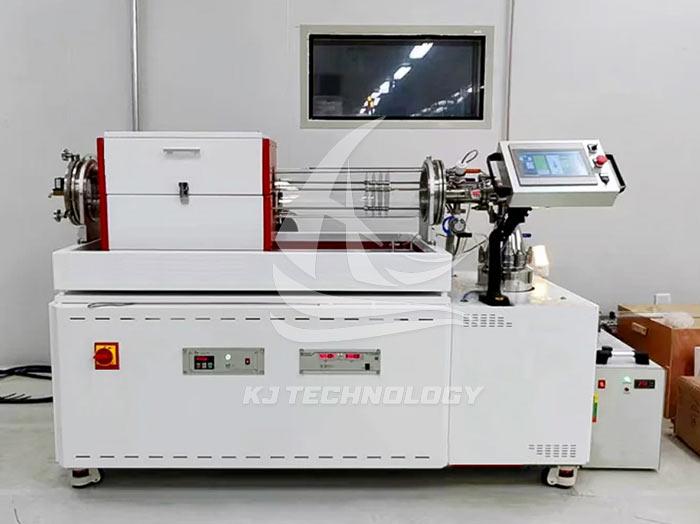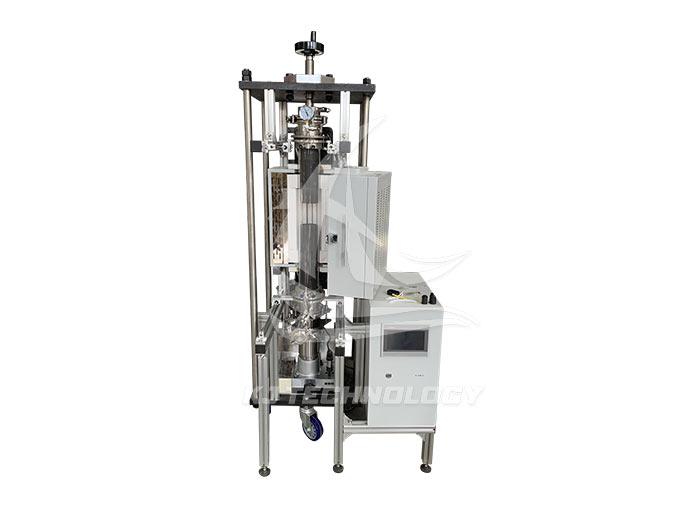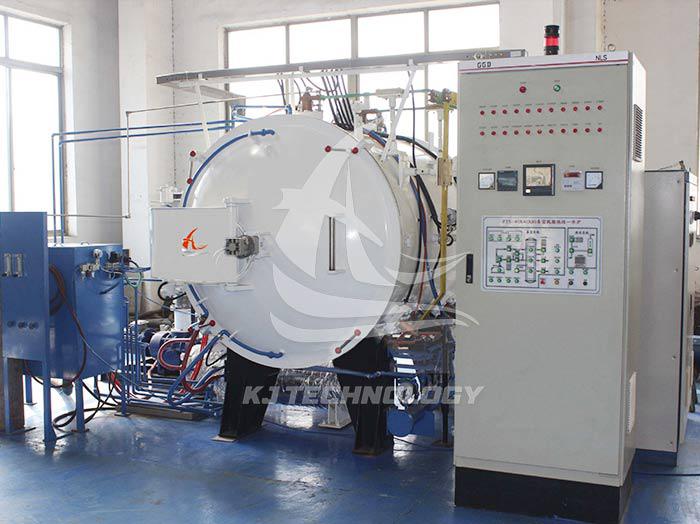Application fields of vacuum degreasing furnace
 08-22-2025 Author: KJ technology
08-22-2025 Author: KJ technology
The vacuum degreasing furnace efficiently removes the binder inside the billet through a combination of vacuum environment, heating, gas regulation and other technical means, and is widely used in the following fields:
1. Powder metallurgy field
Metal Injection Molding (MIM)
Typical materials: iron-based, stainless steel, titanium alloy, hard alloy (WC Co), cobalt chromium alloy, etc.
Application Scenario:
Remove the binders (such as paraffin, polyoxymethylene POM, polyethylene PE) from the MIM body to avoid bubbles or defects during subsequent sintering.
Typical process: Low temperature stage (150-450 ℃) degreasing+high temperature stage (600-1200 ℃) sintering, gradually reducing the vacuum degree.
Case: High precision degreasing is required for mobile phone frames and medical devices (surgical instruments, orthopedic implants) to control dimensional tolerances.
Squeezing rods and molded products
Typical materials: tungsten alloy, high-density alloy, molybdenum alloy.
Application Scenario:
Remove lubricants (such as zinc stearate) or temporary binders to improve material density and mechanical properties.
Advantages: Horizontal structure with side door opening design, convenient for loading and unloading materials; Directional airflow degreasing and strengthening effect, with no dead corners for grease storage in the furnace.
2. Ceramic materials field
Oxide ceramics
Typical materials: alumina (Al ₂ O ∝), zirconia (ZrO ₂), silicon nitride (Si ∝ N ₄), silicon carbide (SiC).
Application Scenario:
Remove the binder (such as polyvinyl alcohol PVA, polyethylene glycol PEG) from the ceramic green body to avoid thermal stress cracking.
Key parameters: heating rate, vacuum degree → 1 × 10 ⁻ ² Pa sintering stage.
Case: Ceramic bearing balls need to be degreased to increase density, and ceramic cutting tools need to avoid surface defects.
Metal/Ceramic Composite Materials
Typical materials: metal ceramic (TiC Ni), carbide reinforced alloy (WC Co Ni).
Application Scenario:
Gradual degreasing: first remove the ceramic phase binder at low temperature, and then remove the metal phase binder at high temperature.
Innovative process: Introducing argon carrier gas cleaning to reduce interface oxidation and improve the bonding strength of composite materials.
3. Magnetic materials and high-temperature alloys field
Permanent magnet material
Typical materials: neodymium iron boron (Nd-Fe-B), samarium cobalt (Sm Co).
Application Scenario:
Remove molding lubricants or temporary binders to avoid oxidation that may cause a decrease in magnetic properties.
Process optimization: Hydrogen positive pressure degreasing to prevent oxidation, and heating directly to sintering temperature after degreasing.
superalloy
Typical materials: Nickel based alloy (Inconel 718), cobalt based alloy.
Application Scenario:
Remove molding lubricants (such as zinc stearate) or cladding materials used for hot isostatic pressing (HIP).
Advantages: Vacuum environment avoids oxidation, improves material high-temperature strength and corrosion resistance.
4. Special Materials and Emerging Fields
Catalytic degreasing material
Typical material: Polyol formaldehyde resin (POM) based MIM body.
Application Scenario:
Catalytic decomposition of binders under acidic atmosphere (such as nitric acid vapor) or high temperature results in a degreasing rate 3-5 times faster than traditional vacuum degreasing.
Equipment requirements: A catalytic reaction device (such as a nitric acid generator) and a tail gas treatment system (high-temperature cracking device) must be equipped.
biomaterials
Typical materials: hydroxyapatite (HA) ceramics, polylactic acid (PLA) scaffolds.
Application Scenario:
Remove organic solvents or plasticizers while maintaining biological activity.
Process control: vacuum degree, temperature.
3D printed ceramics
Typical materials: UV cured alumina and zirconia ceramics.
Application Scenario:
Defatting stage: The vacuum hot press furnace is kept at 300-450 ℃ for 0.5-4 hours to ensure uniform structure of the green body.
Advantages: Avoiding cracking or deformation caused by traditional degreasing and improving printing accuracy.








